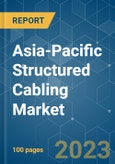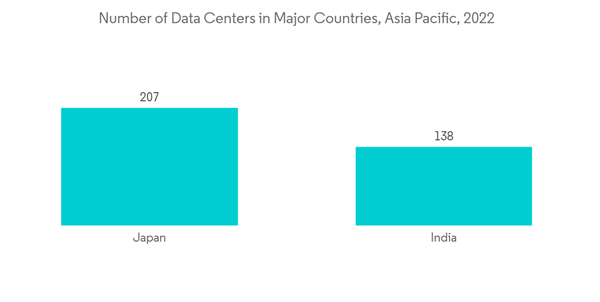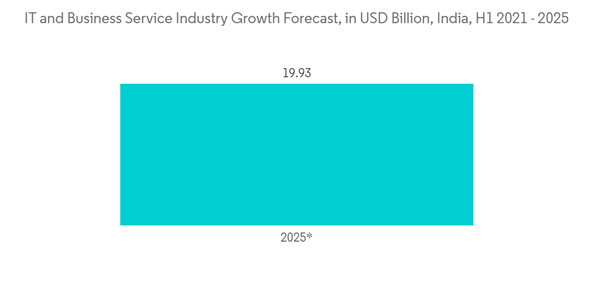Key Highlights
- Structured cabling is a commonly used tactic of using network cabling in the most streamlined, effective manner possible. It has become a valuable way to keep the cables organized and efficient. The structured cabling concept has become so crucial that other non-IT applications, such as building automation services, security, and high-definition audiovisual, have incorporated the same image to ensure that end devices can be upgraded or changed without having to change out the entire cabling infrastructure.
- Each of the significant cabling standards groups, namely ISO/IEC, TIA, and CENELEC, established standards for structured cabling in commercial offices, data centers, campuses, and more. These standards help specify the types of cabling and components used in these environments, including fiber and copper cabling.
- Fiber optic cabling is favored by businesses in long-distance telecommunication platforms, especially when a company needs a high-speed data connection. As fiber cabling provides an optimized, highly sustainable, and future-proof quality service as a broadband access technology, the increasing demand is driving innovations in the form of new product launches in the region. For instance, in October 2022, STL launched India's first multicore fiber and cable to support high capacity per 5G cell site, quantum communication feasibility, and Quad-core fiber connectivity in data centers.
- The increasing investment by governments in Asia pacific region to develop the fiber cable infrastructure is expected to create a favorable growth scenario for the studied market. For instance, under the NBM, the government of India has set a target of 70% liberalisation to take the country's fiber footprint to 5.5 million kilometers by 2024. To expedite the work, the Indian government has decided to lay fiber cables along all upcoming Greenfield and Brownfield expressway corridors. The fiber cables project will first be carried out on a pilot basis on Delhi-Mumbai and Hyderabad-Bengaluru expressways.
- A similar trend has been observed across other countries as well. For instance, in June 2022, the Japanese government stated that the government is aiming to bring high-speed fiber-optic networks to 99.9% of households before the fiscal year 2028 end, to ensure not just major cities but also regional areas can have smooth access to digital services in everyday life. Such advancements and innovations contribute to the studied market's growth.
- However, structured cabling involves various types of fiber optic components such as optics, transmitters, receivers, panels, and connectors, which are usually costly, resulting in higher installation costs. They are also susceptible to transmission losses which impact overall efficiency. Hence, these are among the major factors challenging the studied market's growth.
- The structured cabling market faced significant delays, particularly in the region, where the outbreak of COVID-19 forced the government to impose strict lockdown, especially during the initial phase, bringing down investments in new projects. However, the pandemic has underlined the critical role of data centers in ensuring that IT companies function and the daily lives of ordinary users, which is expected to support the growth of the studied market in the Asia Pacific region in the coming years.
Asia Pacific Structured Cabling Market Trends
Data Centers to Hold Significant Market Share
- As the data center is a crucial facility that organizations use to house servers, critical applications, and data, they are usually designed based on a computing and storage resources network that facilitates the delivery of shared data and applications. The growth of the various commercial and industrial sectors and the increasing demand for automation and other digital technologies are driving the need for data centers in the Asia Pacific region.
- Like other regions, fiber-structured cabling networks are becoming more popular among businesses in the Asia Pacific region, primarily due to the high bandwidth, long-term cost benefit, and easy scalability. As structured cabling offers an organized and highly efficient physical infrastructure for various components, such as connectivity hardware and patch panels, the increasing demand for data centers in the Asia Pacific region will drive the market during the forecast period.
- According to cloud scene, as of January 2022, there were about 443 data centers in China, 207 in Japan, and 138 in India. This number is expected to grow significantly, considering the growing adoption of digital technologies across the region.
- To address the growing demand, investments are being made both by local as well as global players to establish new data centers in the region. For instance, in January 2022, Singapore-based CapitaLand announced an investment of about INR 11,000 crore (~USD 1.5-2 billion) over the next 5-6 years in India, with plans to expand into all 5-6 significant metros in the country. Furthermore, traditional real estates players such as Hiranandani and Adani have also invested heavily to establish new data centers, driving the growth of the data center market and creating opportunities for the development of the studied market.
- Similarly, Tencent Cloud launched its first data center in Jakarta's central business district in 2021. The data center boasts two utility power lines and 2N redundant transformers, which can support up to 72 hours at full load. These factors are driving the demand for structured cabling in data centers.
India to Witness Significant Growth
- The trend of data center convergence, the growing demand for high-speed connectivity devices, and the ever-developing robust IT and communication infrastructure are driving the demand for structured cabling in India. According to Nxtra by Airtel, Mumbai had the power load for the data center industry with 45% of India's total 499 MW inventory. It was followed by Pune, Bengaluru, and Chennai with an equal share of 12% each.
- Fast emerging as the global hub for IT services outsourcing, owing to the presence of some of the largest IT companies, including TCS, Wipro, Infosys, etc., the demand for networking solutions and data centers is growing significantly in the country. According to IBEF, India's IT and BPM industry is expected to reach USD 19.93 billion by 2025, from USD 6.96 in H1, 2021.
- Additionally, the increasing emphasis of the Indian government to digitize the local economy to compete with developed countries places the Indian market among the most favorable ones for the growth of the studied market. For instance, in November 2022, Blackstone Group, a global asset management firm, forayed into the data center business in Asia with a planned capacity of 600 MW across two large hyperscale data centers in India.
- Furthermore, the increasing investment in developing the optical fiber network to boost connectivity across the country also creates potential growth opportunities in the studied market. For instance, in July 2022, STL bagged a high-performance communication network deployment project worth about INR 250 crore (USD 0.03 billion) to deploy optical fiber network in nine circles for a telecom player. The essential fiberized network is expected to form the foundation for many next-generation services, such as 5G, FTTH (fiber to the home), IoT, enterprise networks, and Industry 4.0.
- Many such projects are currently underway in the country. For instance, according to the government of India, the upcoming Delhi-Mumbai Expressway and Hyderabad-Bengaluru Expressway will be the first projects in the country to be enabled with an optical fiber cable network as part of India's National Broadband Mission (NBM). These developments by the various governments are driving the demand for the structured cabling market.
Asia Pacific Structured Cabling Market Competitor Analysis
The Asia Pacific Structured Cabling Market is fragmented. The major players have used various strategies, such as new product launches, joint ventures, partnerships, collaborations, and acquisitions, to increase their footprints in this market and sustain in the long run. Key players in the market are Belden Inc., Commscope, Inc., Corning Incorporated, Legrand S.A., the Siemon Company, Anixter Inc, and many more.- November 2022 - Panduit Asia Pacific, a provider of engineered, flexible, end-to-end electrical and network connectivity infrastructure solutions, partnered with the Institute of Technical Education (ITE), Singapore, to launch a new structured cabling lab center, the ITE-Panduit Centre for Information Network Infrastructure Solutions.
- November 2022 - Wesco partnered with Corning and Nokia for a rural broadband FTTH kit. Wesco International uses fiber-to-the-home (FTTH) connectivity technology from Corning Inc. with PONtechnology from Nokia to create an FTTH kit for rural and regional network deployments. The collaboration sees Corning supplying elements of its FlexNAP outside plant fiber cable and connectivity portfolio, making Wesco the first distributor to partner with Corning on creating an FTTH kit.
Additional benefits of purchasing the report:
- The market estimate (ME) sheet in Excel format
- 3 months of analyst support
This product will be delivered within 2 business days.
Table of Contents
Companies Mentioned (Partial List)
A selection of companies mentioned in this report includes, but is not limited to:
- Belden Inc.
- Commscope, Inc.
- Corning Incorporated
- Legrand S.A.
- Schneider Electric SE
- The Siemon Company
- Metz Connect GmbH
- Siemens AG
- Anixter Inc
- Datwyler IT Infra GmbH
- Nexans
- LS Cable & System Ltd
- Onnec










